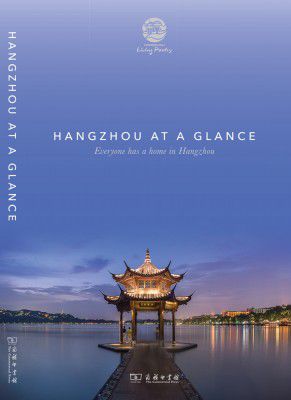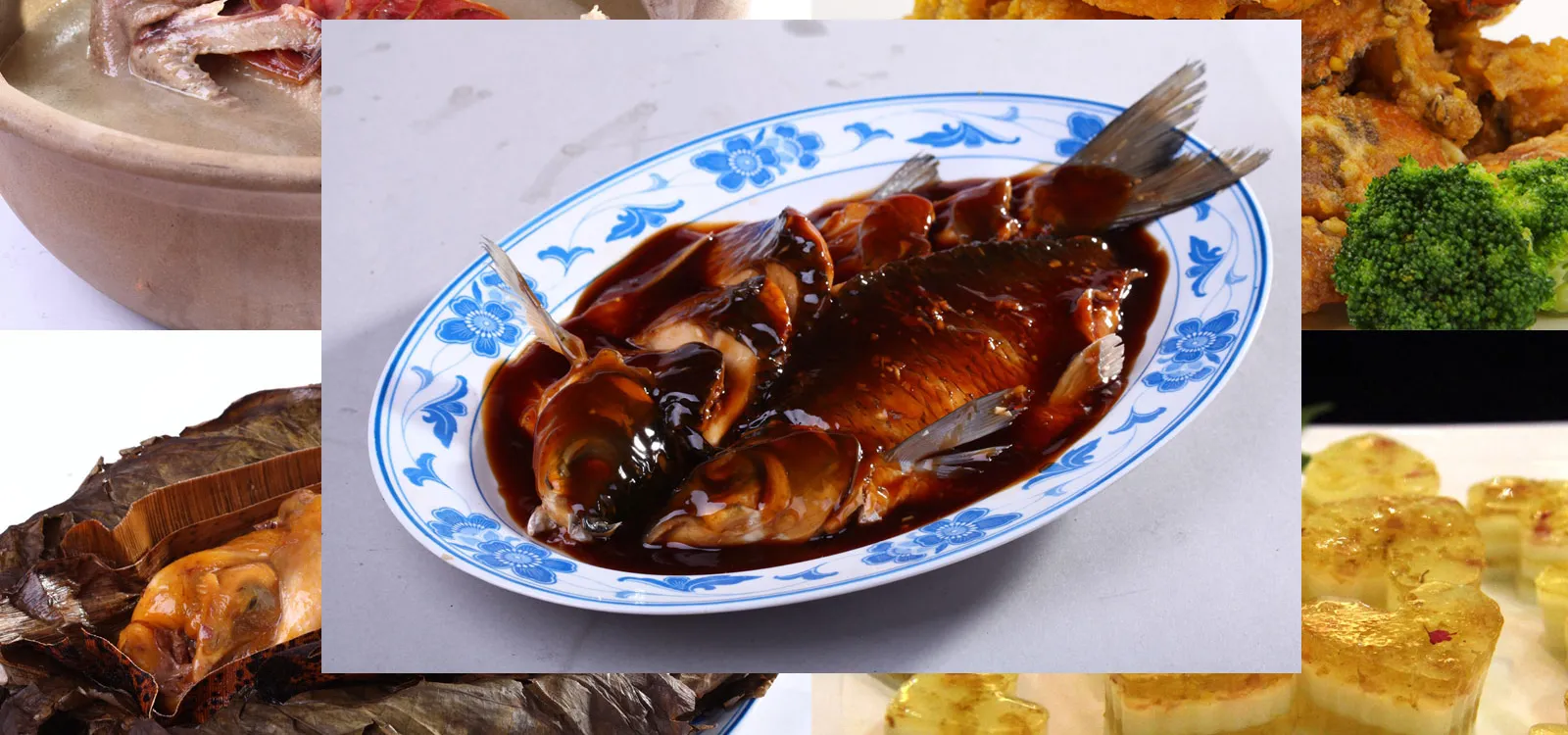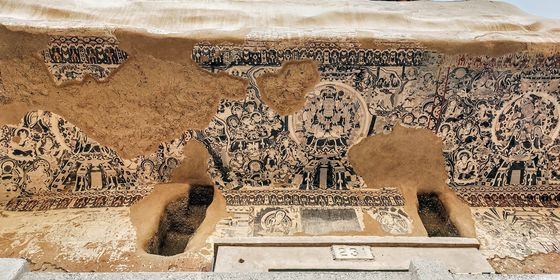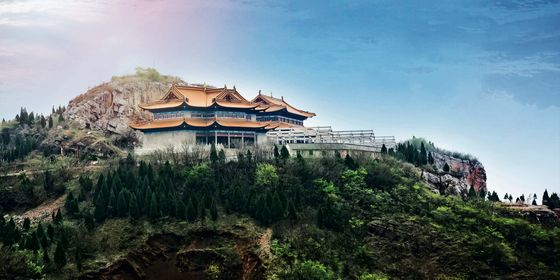Must-try dishes from the city of Hangzhou
West Lake Carp in Sweet and Sour Sauce 西湖醋鱼
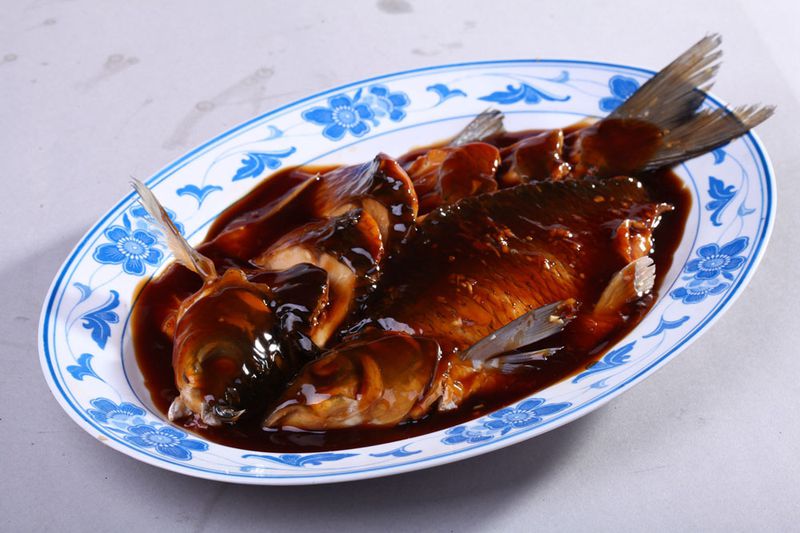
This dish brings together the light flavors of carp and the sweet-and-sour sauce flavors for which Chinese cuisine has become so famous. As with many Chinese dishes, there is a story behind the meal. In this case, an evil official murdered a man so he could be with the dead man’s wife. Instead, the wife fled town with her husband’s brother, determined to avoid falling into the clutches of the evil official. It is said that on that tragic night when they fled, she cooked this dish as both a reward and farewell for her dead husband’s brother. The story, though, has a happy ending: the dead man’s brother became a powerful official himself and avenged his brother’s death. But hey, when you have some tasty carp ahead of you, a happy ending is all but guaranteed anyway. In addition to a splash of Shaoxing wine, the dish also includes ginger and soy, which give it a full-bodied flavor, and, depending on the chef’s preferences, it includes vinegar and sugar in varying quantities.
Beggar’s Chicken 叫花鸡

A regular on Hangzhou’s lists of famous dishes, beggar’s chicken consists of chicken wrapped in lotus leaf, with a dab of Shaoxing wine to give it extra flavor. Traditionally, it was roasted in mud, though today this step isn’t strictly necessary. In bygone eras, this chicken is said to have been cooked at campfires by lowly beggars who could only wrap their chicken in mud and leaves. Surprisingly, the scent proved delightful, cementing this dish’s place as a must-have for lovers of Hangzhou cuisine. Today, top notch restaurants continue to use clay to separate this dish from other chicken pretenders (though modern chefs first wrap the chicken in cellophane and have perfected the use of safe clays). The end result is a chicken you can literally crack open, to reveal the feast within, and the chicken is often stuffed with other tasty ingredients like shiitake mushrooms.
Black Crab in Egg Yolk 蛋黄青蟹
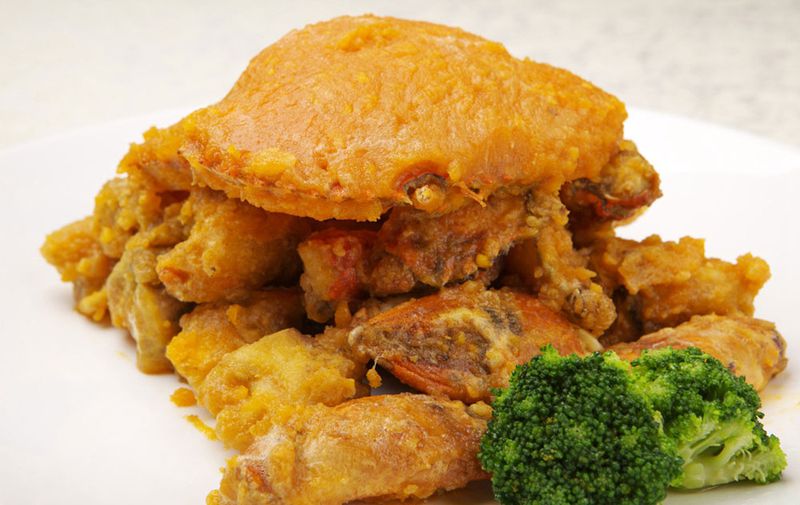
With West Lake hogging all the limelight, it’s easy to forget that Hangzhou is just 60 kilometers from the sea. The black crab, or “mud crab,” is a crustacean that lives in the shallow waters of river deltas and sea shores. Hangzhou-ites fry and slather them in a sauce made from salty egg yolk. To prepare, take a salted egg that has been soaked in brine, remove the yolk, and crush it to a powder. Keeping the crab in its shell, coat it lightly in cornstarch and fry it in oil until cooked, then remove it from the pan. Mix the egg yolk in the pan with the crab gravy until it becomes a paste. Put the crab back in the pan, coat it in the sauce, and season with cooking wine, red peppers, onion, and ginger.
Immortal Duck and Ham 火踵神仙鸭
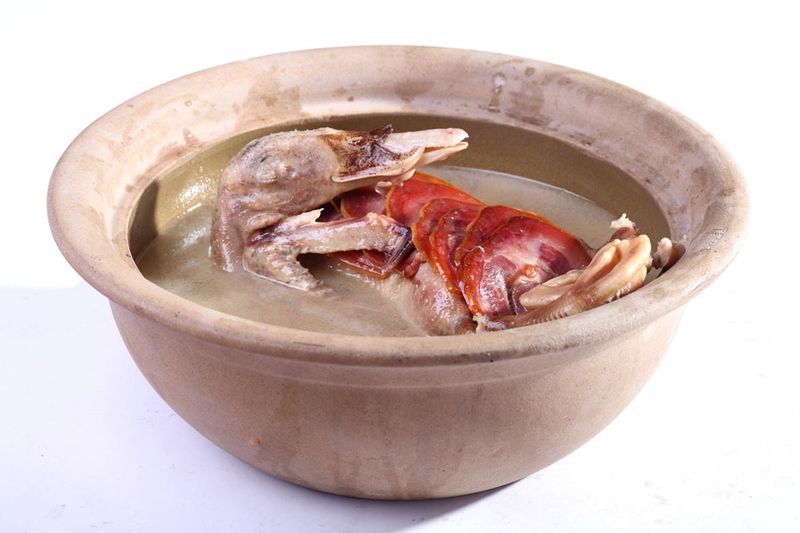
China’s famous modernist writer Lu Xun once cut short a trip to Hangzhou because, he wrote to a friend, the weather in July was like being “steamed into immortal duck”. He never returned in his lifetime. Though uncomfortable for a human, searing temperatures followed by a steady simmer are what give this Hangzhou classic dish its signature flakey texture and savory broth. A whole duck is boiled in a covered crock pot at a high temperature together with authentic Jinhua ham (金华火腿), ginger, and green onion, then simmered on low heat for about two hours until flakey. The ham is then sliced and placed over the duck. Everything is seasoned with salt and cooking wine and put to simmer for another five minutes before serving. Unfortunately, this dish is falling out of fashion and can be hard to find. However, a similar dish with ham, duck, and Chinese cabbage, called ham and duck hotpot (火踵老鸭煲) is served at the 90-year-old Tian Xiang Lou (天香楼) Restaurant on Yan’an Road.
Osmanthus Jelly Cake 桂花水晶糕
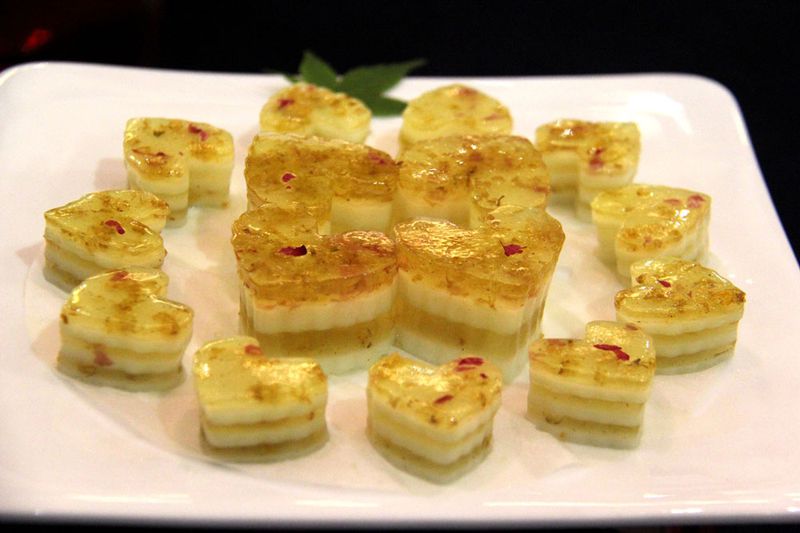
Osmanthus cakes are the xiaolongbao of desserts: every city has its own recipe. But Hangzhou has them all beat by having an annual festival for appreciating these soft, sweet-scented pastries. Early autumn each year, visitors descend on West Lake and gardens around Hangzhou to view the osmanthus flowers in bloom. It’s tradition to set up a table under a fragrant tree and drink Longjing tea, play cards, and eat osmanthus cakes with friends. Legend has it that a scholar brought osmanthus to earth from the moon palace, and a peddler who smelled the flowers from outside the scholar’s window had the idea of mixing flower petals in the honey-flavored cakes that he sold. You can buy a box at Jiang Nan Chun (江南春), a traditional dessert shop with several locations in Hangzhou, and from vendors at Manjuelong Village south of West Lake.
Photographs courtesy of Chinese Hangzhou Cuisine Museum
Excerpt taken from Hangzhou At A Glance by TWOC. You can pick up a copy from our store or grab the digital version on our China Dispatch app. Go get your copy now.
